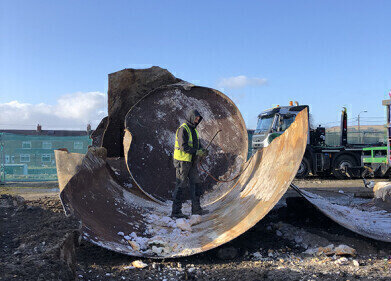Soil remediation
Which Chemicals Are Used for Soil Treatment?
Jul 28 2022
Maintaining healthy soil is important for a number of reasons. Not only does it provide the nutrients needed to cultivate crops and wildlife, but it can also affect groundwater and subterranean aquifer water quality. If contamination is allowed to build up to extreme levels, it can even endanger human health.
For that reason, the scientific community has developed a number of methods of treating contaminated soil to reduce the toxicity of the harmful elements and boost its overall health. Chief among these is bioremediation, in which organic substances such as microbes, bacteria and fungi consume the contaminants. Soil washing, in which a liquid wash solution is used to cleanse the affected area, is another popular technique and has been used to great effect at a former refinery site which was once heavily polluted in Germany.
However, chemical oxidation – known as Chemox for short – is another popular technique that is particularly effective in tackling particular pollutants. But which ones does it target most effectively? What are its unique advantages in comparison to other remediation efforts? And what chemicals are used in this method of soil treatment?
When is Chemox soil treatment used and why?
Chemox is a technique that is highly effective in treating a range of organic contaminants, including polychlorinated biphenyls (PCBs), total petroleum hydrocarbons (TPH) and benzene, toluene, ethylbenzene and xylenes (BTEX). It’s employed in a wide range of applications and settings and offers the distinct advantage of in-situ treatment.
In-situ chemical oxidation, often shortened to the acronym ISCO, is particularly sought-after due to the fact that it can treat contaminated soil samples in difficult to access or remote areas. For example, the terrain located underneath a building or other infrastructure can be nigh-on impossible to remove for treatment. In this instance, Chemox is an excellent technique for reducing its toxicity through injection of the relevant chemicals.
Which chemicals are used to treat soil in Chemox?
As the name suggests, the chemicals used in Chemox are specifically chosen for their oxidising properties, since this process has the ability to make contaminants less toxic, less stable and less mobile. This boosts soil quality, makes the pollutants easier to remove and, in the case of the latter outcome, isolates them so as to safeguard the terrain surrounding the affected area.
The most commonly used chemicals for soil treatment include hydrogen peroxide (H2O2), ozone (O3), potassium permanganate (KMnO4) and sodium persulphate (Na2S2O8). These chemicals can either be used in isolation or in conjunction with other catalysing agents to speed up their activity and optimise their performance. For example, an iron catalyst is often added to H2O2 to heighten its reactivity for a period of two days on average. The particular chemicals used may vary depending on the contaminants and the circumstances of the situation in question.
Events
May 11 2025 Vienna, Austria
May 18 2025 Algiers, Algeria
23rd International Water Management Exhibition
May 20 2025 Prague, Czech Republic
Singapore International Water Week Spotlight 2025
Jun 23 2025 Singapore
Jun 25 2025 Sao Paulo, Brasil














